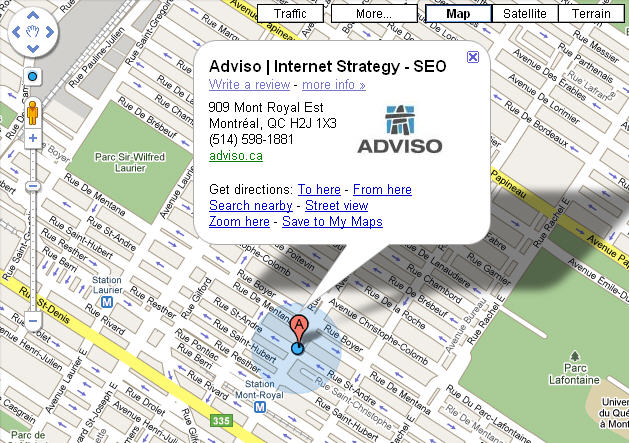Improve user experience through geolocation
 Since my transition to version 3.5 of Firefox and the use of its geolocation module by Google maps, I have rediscovered the magic of "you are here" on the interactive Google map .
Since my transition to version 3.5 of Firefox and the use of its geolocation module by Google maps, I have rediscovered the magic of "you are here" on the interactive Google map .
To be able to see your location on Google maps, you just need to have the latest version of Firefox , Chrome or Opera (it may also work with Safari, but not with Internet Explorer) and go to the Google site maps . Then, you must click on the white dot which is located just above the yellow man (the one that activates Google Street View). When you click on this white dot, your browser will ask you if you allow this site to see your location information and if you agree, the dot will turn blue. Another blue dot then appears on the map and indicates your current position.

WHAT COULD THIS BE USED FOR?
If we are interested in raw location data (excluding use for a website), this makes it possible to do Reality Mining . We can see an application of it in the following video, even if the presenter does not talk about it much.
Indeed, if we are interested in the history of the movements of the speakers for the electoral promotion of the 2008 elections in the United States, we could analyze the energy and the time developed by the various parties in their promotion , and this, for each state.
If we return to the use of geolocation information as part of a website, we could for example develop an online sales site that could:
- Set the site version, language and currency according to the country from which you are connected (for the language, it is already the case thanks to the language preferences of your browser).
- Directly display prices with applicable taxes and estimate the amount of delivery .
- Promote products based on where you are from . Ex: in Quebec, a winter jacket and in Montreal an autumn jacket.
- Display images of the product in the environment in which you are likely to use it .
- Filter user-generated content so that it's more relevant based on where you connect, shopping habits in that region, or culture or way of thinking there. Ex: only display content that talks about jackets in the direct vicinity of Montreal.
Finally, there is also all the information that can be cross-referenced with this geolocation data in order to obtain even more relevant information . Thus, we could cross news, weather data, the most searched keywords, etc.
The site might therefore offer you discounts on new heavy-duty snow shovels or warn you that delivery might be interrupted due to road conditions if it knows that a storm is approaching your place of connection and that the latest news on this storm indicate that it has done great damage in the regions through which it passed.
As I did in my article on Reality Mining, I want to warn you that it is imperative to leave a visible and clear exit door for the user so that the technology is present to help and support him . in his search for information and not to impose a choice or standardize it.
HOW DOES IT WORK?
Web browsers such as Firefox, as well as Chrome and Opera, have started to integrate the W3C geolocation API specifications . This integration allows the site you are visiting to ask you to share your location information .
These are determined by the Wifi terminal to which you are connected and your IP address . The API will use this information and cross-reference it to determine your location and add a probability rate defined by the type of information that the API was able to retrieve. This information can be obtained in different ways.
For example, for WiFi hotspots (and cell towers), the Skyhook company passes through the streets of major cities and records the locations of WiFi (and cellular) signals. When you are connected to a terminal, the API could ask this company where this signal is located in order to determine where you are (Currently, Firefox uses Google's Location Service ).
Subsequently, depending on the probability rate, the display of your location on the map could be more or less precise by using an area rather than a blue dot.
-2.png)






